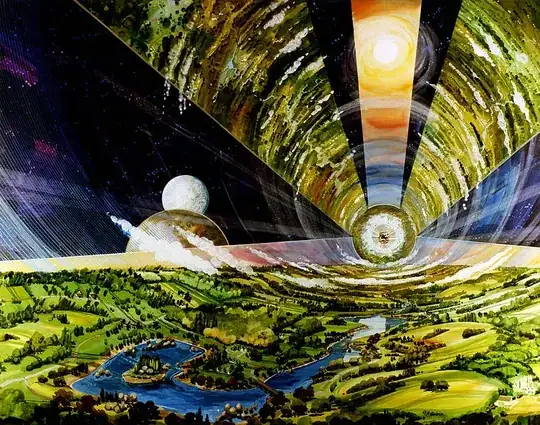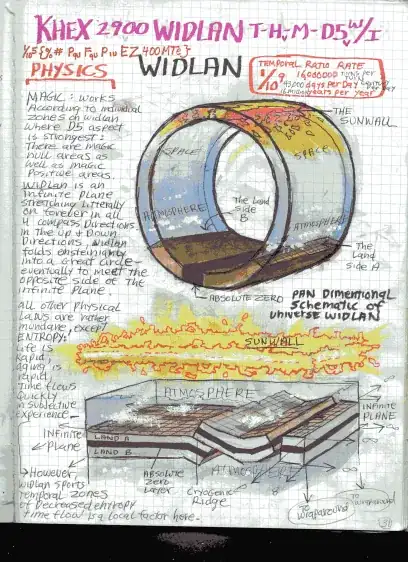I'm inspired by this question and was thinking that it is nigh impossible for sun, moon and star to exist in this world and even if they do, there is no way to sun and moon to orbit and create day-night cycles.
So i came upon a solution, how about a infinite tube world like this :

Here is my world :
There is no end either side of the tube. It is infinite.
Tube's surrounding walls are 6371 km thick and their geographical structure is just like earth.
If you started to dig at one point inside the tube first you will go through a solid crust, then a liquid mantle layer, then a solid outermost layer. if you go beyond this layer (beyond 6371 km) you will come out of the other side of the tube's wall travelling in reverse order of the layers.
I have not decided the radius of the tube but it should be huge so that a large portion of the center remain empty like space and with negligible gravitation force.
In this empty space are moon, stars, even planets, asteroid and lots of other stuff just floating around in either directions of the tube.
When a star go supernova it destroy a large area of tube and hurled the debris in either direction. Some of these matter fall down on the surface again and rest create a debris cloud in the center.
When this debris cloud gets enough matters either by other supernovas or some other ways they form stars and stuff.
These stars and other material in the center space keeps running in either direction of the tube. (This can not be stationery otherwise they will just fall down to nearest surface of the tube due to gravity).
These chaotic events could leads to a configuration of two binary stars revolving around one another with parallel to the tube.
Thus above configuration can create a stable day night cycle on a small portion of the tube. When a sun comes near the surface it is day and whens it go away it is night until the other one comes around.
What are the possible flaws in this world if i wanted to follow real world physics (as close possibly) ? Could it work to create a possible earth like environment ?
